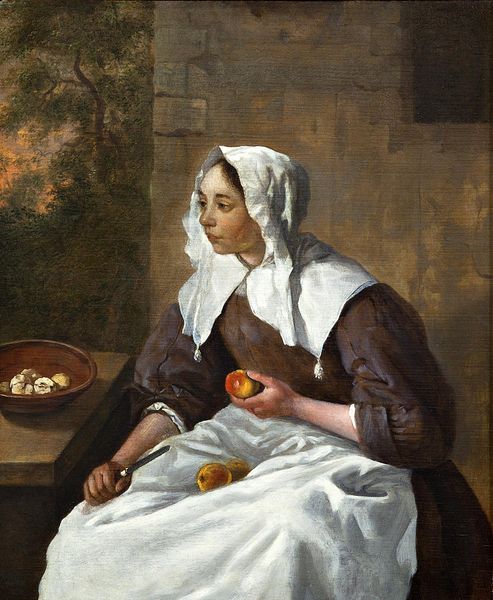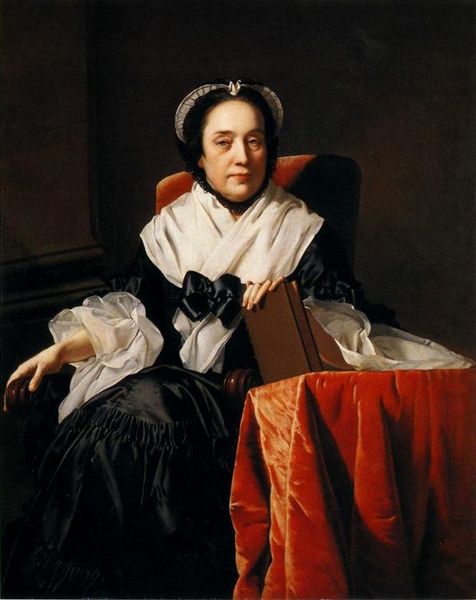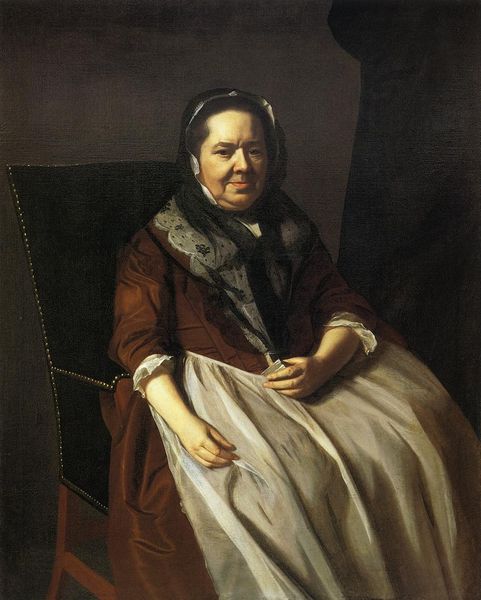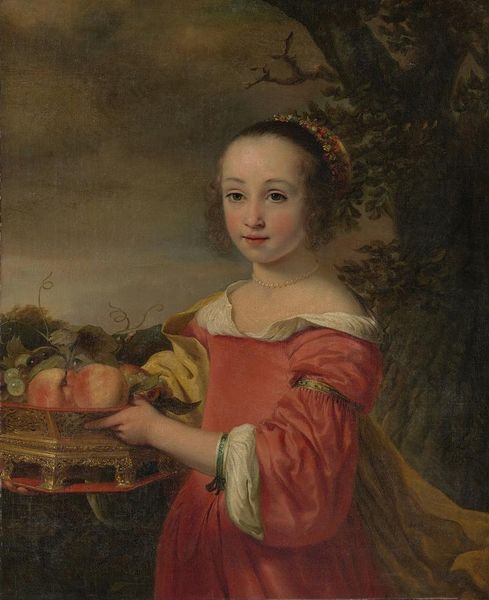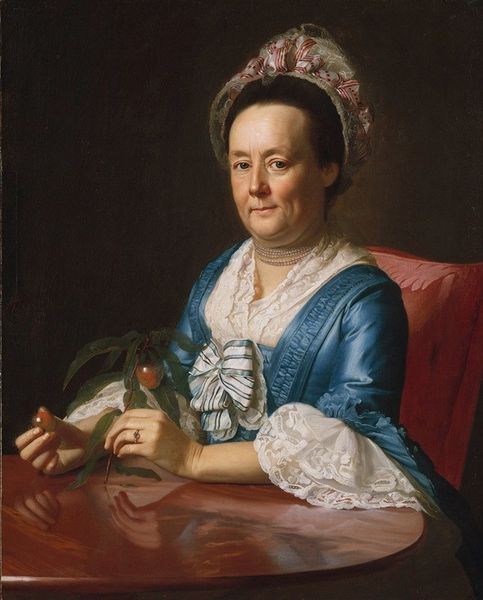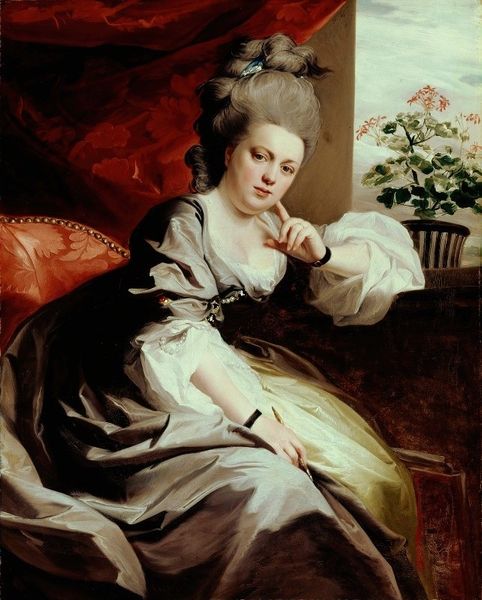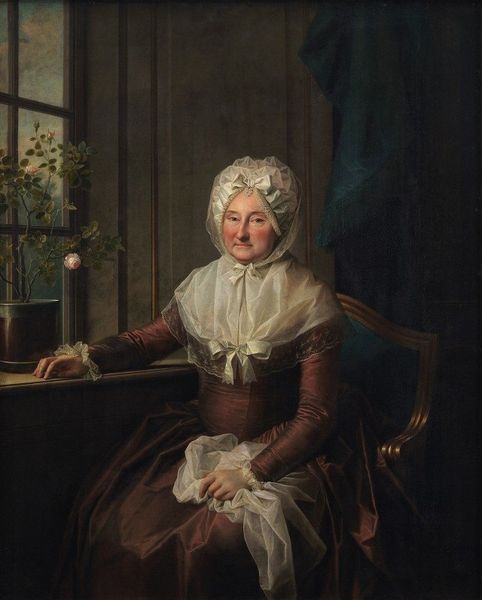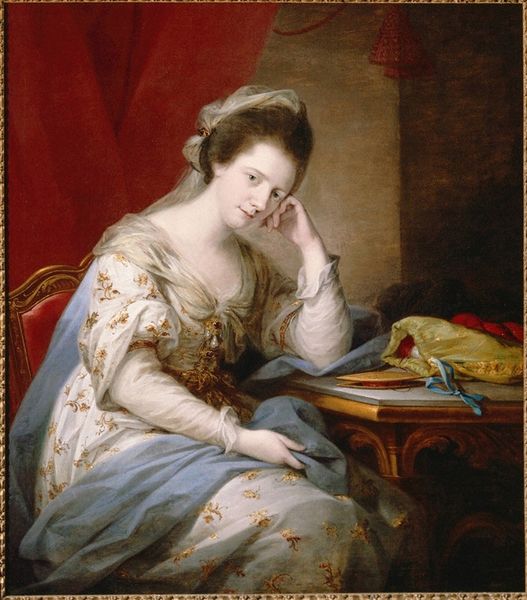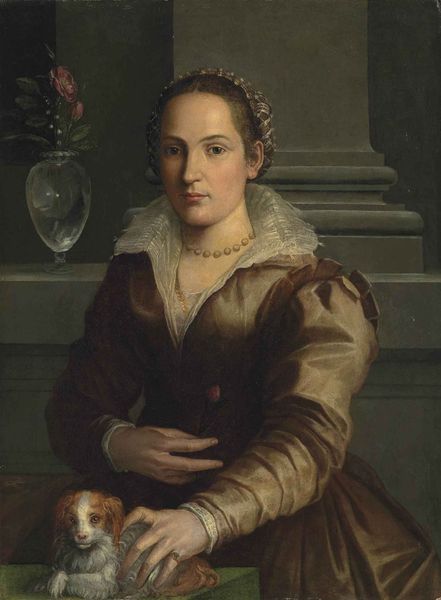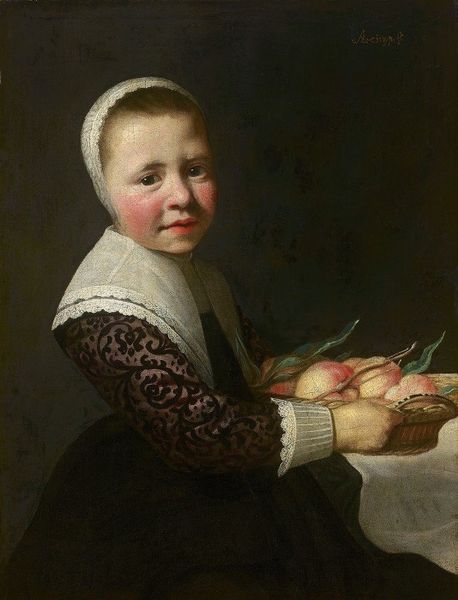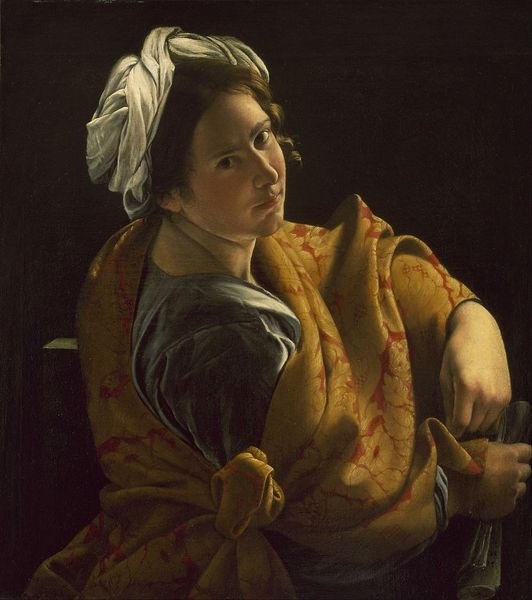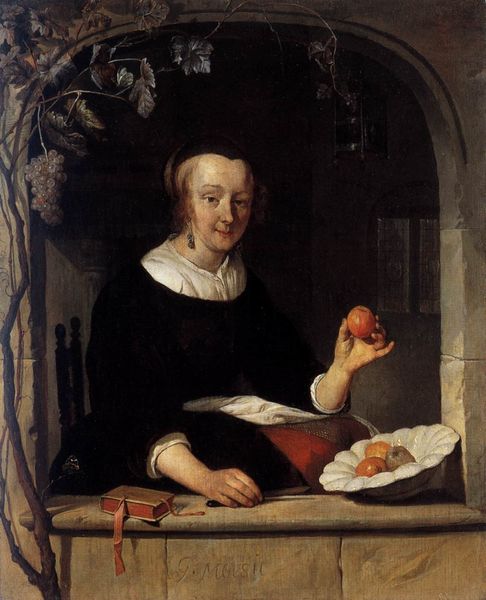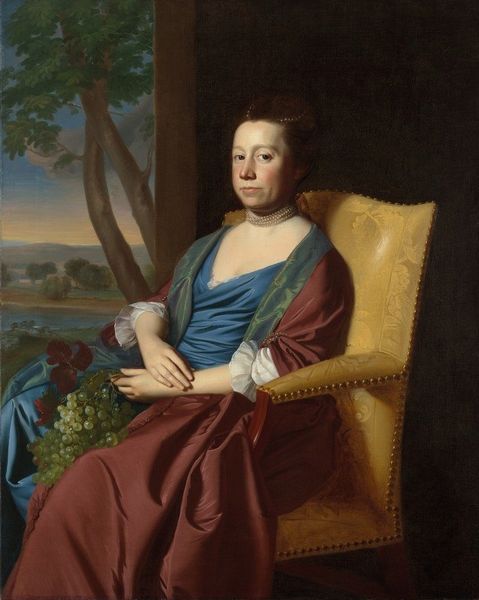
Dimensions: 127 x 101.6 cm
Copyright: Public domain
Editor: This is "Mrs. Ezekiel Goldthwait," an oil painting by John Singleton Copley, created in 1771. It's strikingly still. What first captures my eye is the contrasting textures—the smooth fruit against the intricate lace. What do you see in its composition? Curator: Notice how the geometry governs the arrangement. The circular table anchors the composition, a deliberate counterpoint to the figure’s more subtle triangular form. The light, predominantly focused on the still life and Mrs. Goldthwait’s face and hand, creates a stark contrast with the somber background. What function might this contrast serve, do you think? Editor: Perhaps it directs our gaze. The luminescence on the fruit almost suggests a moral allegory. There's definitely a tension between wealth and modesty here, even luxury and restraint. Curator: Precisely. The rendering of each element invites contemplation. The precision in the fabric's folds, the minute detail in the lacework. Do you feel this focus on detail lends the artwork a sense of psychological depth, or something else? Editor: While the detail is amazing, I’m not sure about psychological depth. The subject’s gaze doesn’t quite invite introspection, more like presentation. Still, it really invites the eye to roam around, soaking in all those precise details you pointed out! Curator: Yes, the painting thrives on pictorial devices: texture, color, contrast. Form here dictates everything. Editor: I agree, concentrating on the interplay of form definitely made me appreciate how each aspect, even the subject's gaze, helps the composition work in the Baroque style. Curator: Exactly, considering how form contributes meaning unlocks layers that narrative approaches might miss.
Comments
No comments
Be the first to comment and join the conversation on the ultimate creative platform.
